Boa Constrictor
- Red-tailed boa, more commonly known simply as the Boa Constrictor, and
- the Rainbow boa. This is easily distinguished by its orange/black or chocolate skin with a sheen that refracts the light, demonstrating all the colours of the rainbow.
Red-tailed boa
This has the scientific name Boa constrictor constrictor - one of the rare cases where the scientific name and common name are more or less the same. It's a large bodied snake, with adults ranging from 1.8 to 3 metres. It has a wide geographical range stretching from northern Mexico through to Uruguay and northern Argentina. There are 10 separate subspecies - but the distinctions between them aren't clear and it isn't unusual to find specimens exhibiting traits of multiple subspecies. Most are tan or beige - although some can also appear very dark. Typical species have 15 to 30 dark saddle-shaped markings along the length of their back - which increase in size and turn redder towards the tail ... hence the name red-tailed boa. This red tail is more prominent in younger specimens.
Boa constrictor, clearly showing why its also commonly referred to as the Red-tailed Boa. Photo: Embreus/Wikimedia.
Rainbow Boa
The Rainbow Boa is sometime described as being one of the world's most beautiful snakes. It's orange-red or chocolate-brown colour, with three parallel stripes at the top of its head, lighter-coloured circular markings along its back, and dark circular markings along its sides topped with a orange or reddish crescent. However, its true magic is due to the microscopic ridges on its skin - which act like prisms, refracting light, with an iridescent sheen displaying all colours of the rainbow. Like the Boa Constrictor, it has a wide range stretching from Costa Rica to northern Argentina. However, unlike the Boa Constrictor, it's more closely related to Caribbean species categorised under the genus Epicrates. These are distinguished by the presence of large regular scales at the top of their head, rather that the smaller granular scales common in other boas. There are also minor differences in the teeth and skeletal structures
A Rainbow Boa (Epicrates cenchria) exhibiting its orange coloration, circular dorsal and lateral markings, with three parallel stripes on it's head - and it's unmistakeable iridescent rainbow sheen. Photo: karoH/Wikimedia.
Within the Pantanal, you're more likely to encounter the Paraguayan Rainbow Boa species, Epicrates crassus. This is has a dull red or chocolate-brown base colour rather than orange.
Conservation Threats
Although boas remain relatively common through many areas of their range, the growth of mechanised agriculture and land development is resulting in significant destruction of their natural habitat and food sources. Significant numbers have also been captured and taken from the wild for the pet trade. Sadly, when this occurs, many individuals don't survive - leading to even greater numbers having to be taken. Fortunately, most of the specimens used to supply the North American and European pet trade are now obtained through captive breeding - although, if you're ever considering one as a pet then it's best to check.
Red-Tailed Boa
Scientific Name
Local Name
Description
Boa constrictor constrictor
Jibóia or Boa
Large heavy-bodied tan-coloured snake with dark saddle markings and reddish tail. Typically around 3 m in length.

Rainbow Boa
Scientific Name
Epicrates cenchria
Local Name
Jibóia-vermelha
Description
Similar to the boa constrictor - but slightly smaller (2 m) and orange or chocolate-brown with light circular markings. Micro-ridges on the skin refract light creating an iridescent rainbow-like sheen.
The Red-tailed Boa ranges across much of South America, including the Pantanal. Other similar species such as Boa Imperator stretch up into Central America.
This map shows the range of Rainbow boa species. Besides Epicrates cenchria (which includes several subspecies of its own) this includes other related species Epicrates assisi, Epicrates alvarezi (Argentinian Rainbow Boa), Epicrates Crassus (Paraguayan Rainbow Boa) and Epicrates maurus (Brown or Colombian Rainbow Boa).
Behaviour and Habitat
Like other snakes, Boas are cold blooded - getting heat from their surroundings. In the wild, snakes bask in the sun to keep warm, then move to shadier spots or even go swimming when it gets too hot. This is called thermo-regulation. Boas are generally solitary, and don't approach or interact with other snakes unless it's time to mate. They're also primarily nocturnal - which is when they're more likely to come out - hunting birds, lizards and small mammals such as rodents. As boas increase in size then so does the size of their prey - allowing them to start taking bigger animals, even including ocelots. Although they have been known to actively hunt, boas are ambush predators which lie in wait for a potential meal to unwittingly wander too close. They strike quickly, latching onto their victim with sharp teeth - snatching it back towards them and very rapidly wrapping their coils around it. Usually its all over within a fraction of a second. Once the prey has been taken, the boa's tightening coils mean that the prey is quickly asphyxiated. However, due to their slow metabolism, boas aren't mindless killers attacking everything around them. Their meals are few and far between - although younger snakes feed more often than larger ones due to the smaller size of their meals. Small boas will feed around once a week, intermediate snakes will feed once every two weeks, and adults will probably only feed every 3-4 weeks ... although this obviously depends on the size of the last meal. In turn, boas are preyed on by birds, mammals, and even other snakes - especially when they're young and almost entirely defenceless.
Boas are sometimes found near water sources, such as rivers are streams - but generally still within proximity to woodlands rather than in wetland areas. Greater numbers can be found in the hills which surround the Pantanal region, and which are safer from seasonal flooding. Boas are semi-arboreal, spending much of their time among the lower branches of trees when young. But, as they get bigger and heavier, they're more likely to change to a terrestrial way of life - and often end up inhabiting the burrows of other animals. They occasionally also take up residence in areas near human habitation (or end up being kept as pets, including by indigenous populations) where they play an important role keeping the rodent population in check.
Reproduction
Boas reach sexual maturity at around 3 or 4 years of age. Their typical size at that point is around 1.3 m. Mating takes place in the drier months of autumn and winter (March-August), with the young being born after a further four month gestation. Some females like to give birth in very shallow water, just a couple of centimetres deep. Baby boas are born in individual membranous yolk sacks, which they have to break out of before they take their first breaths. As with most other snakes, they're born independent, needing to hunt and fend for themselves.
With their generally bigger size, Boa Constrictors give birth to larger litters, which can range from 10 to 65, although around 25 is most typical. The litter size for Rainbow Boas is smaller - ranging from 2 to 35, but with around 20 also being typical. The young are 40 to 50 cm in length, and will usually have grown to around a metre by the end of their first year. As with the related Anaconda species, females boas seem to eat more and grow larger than males.
Quick Facts:
- Boas are ovoviviparous. Young are born active and independent.
- Boa Constrictors reach up to 4 m in length, although this is rare in the wild. Rainbow Boas are smaller, only reaching around 2 m in length.
- In captivity, Boa Constrictors can live around 30 years, with some reportedly reaching 40. By contrast, Rainbow Boas live around 20 years. However, these longer lifespans are less likely in the wild.
- Avoid getting too close to wild boas, as they can be aggressive and strike quickly when provoked. They have sharp teeth which are designed to latch onto prey and hold it until the snake can manoeuvre it's coils around it. This means that the boa's bite can draw blood and be very painful. This can be avoided if you keep a safe distance and do not interfere with the snake.
- Young boas can be aggressive but, if raised as pets and accustomed to people, they can be docile and will very rarely attack.
- Boas aren't aquatic like anacondas, so are rarely encountered within the wetlands. But they can be found in dryer woodland areas, and in hills bordering the Pantanal region.
- Boas are usually nocturnal, coming out at night to hunt small animals, such as birds and rodents.
- When frightened, boas can emit a shrill whistle by emptying all the air in their lungs. The sound is used to try discouraging predators from approaching.




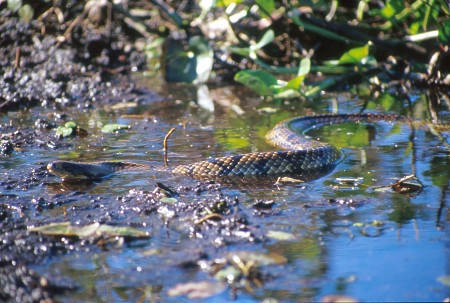
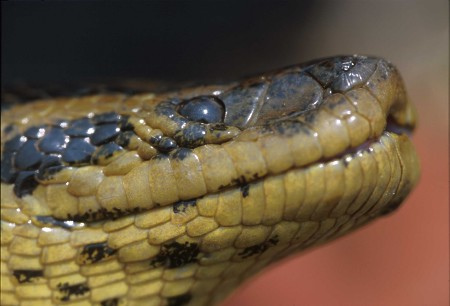


Banner image: Boa constrictor (Shutterstock/Leya Selenia).
Footer images: Jacaré; Anaconda; False Water Cobra (Andrew Mercer)
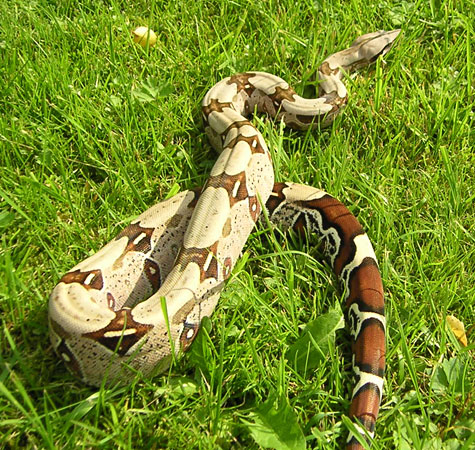
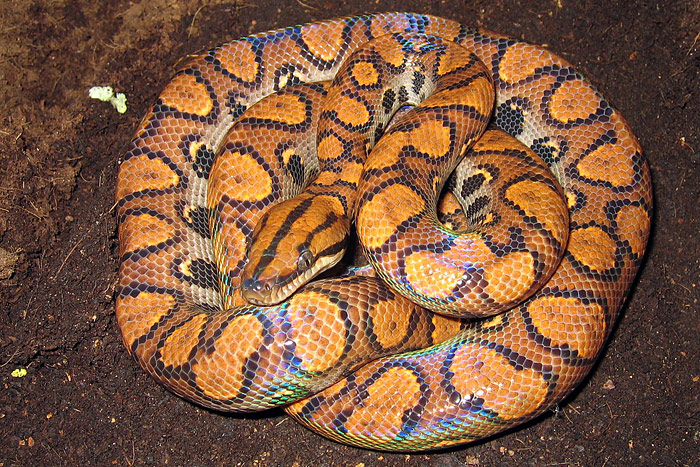
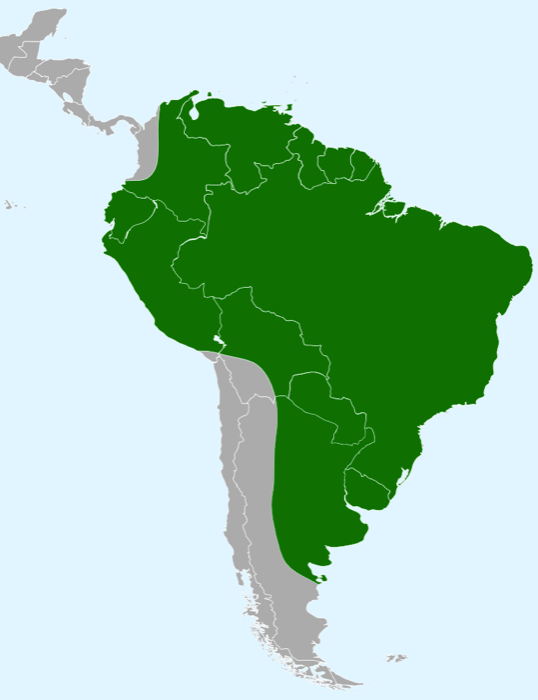
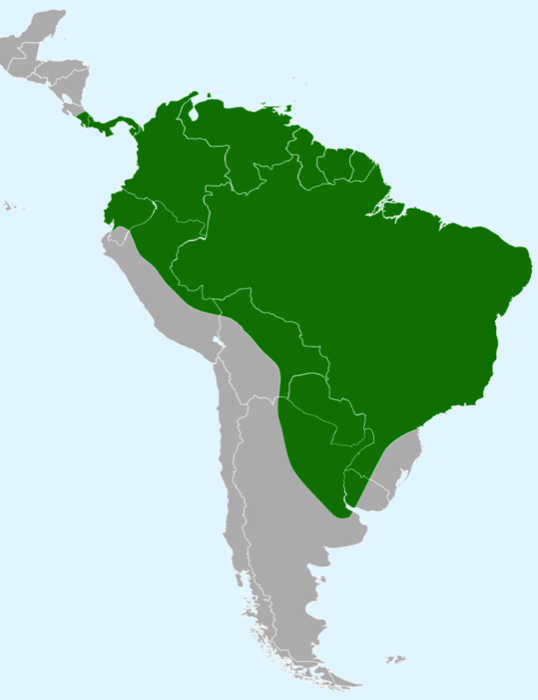
Pantanal Escapes